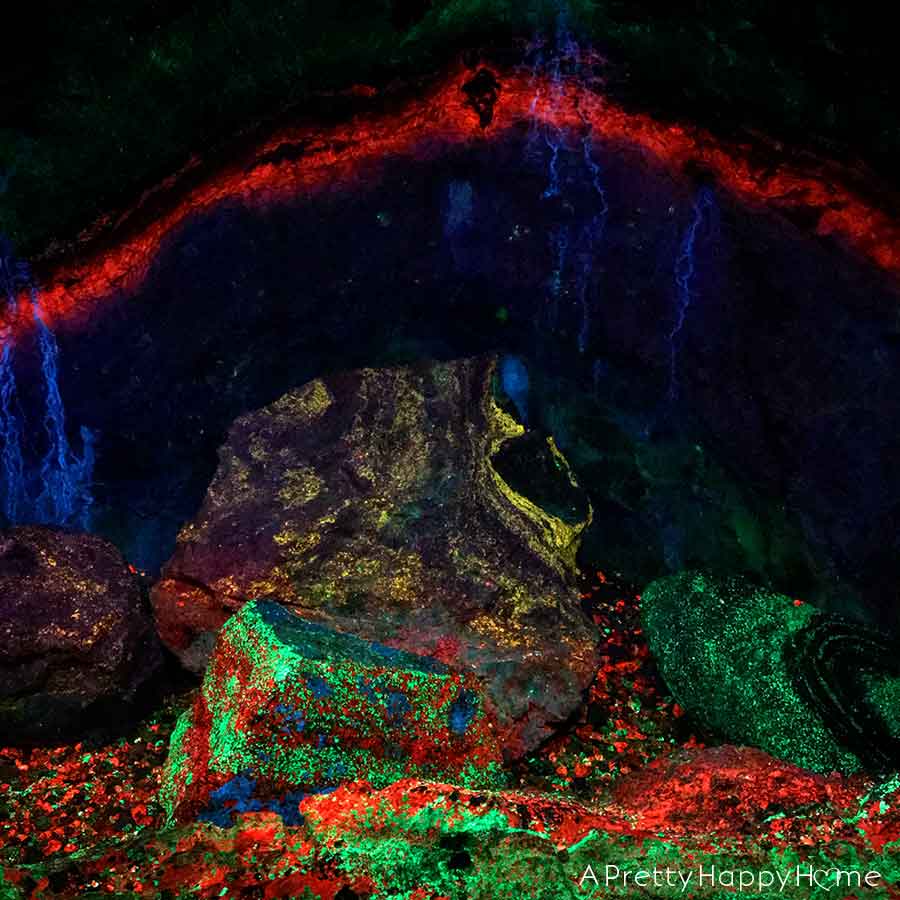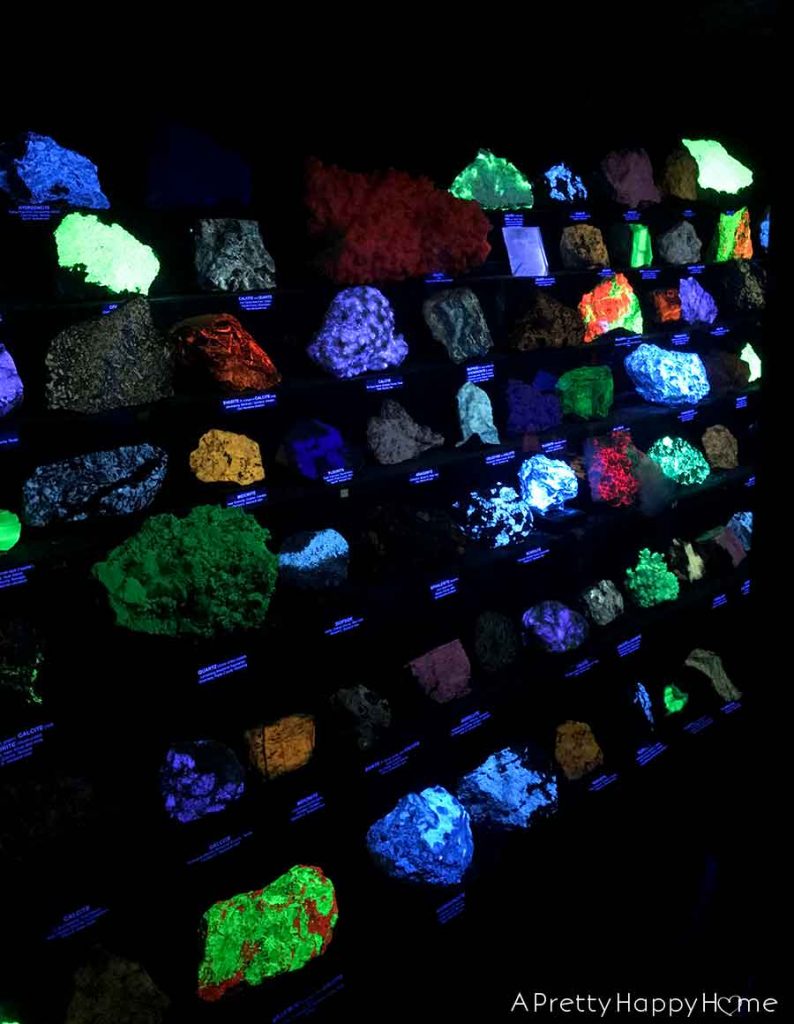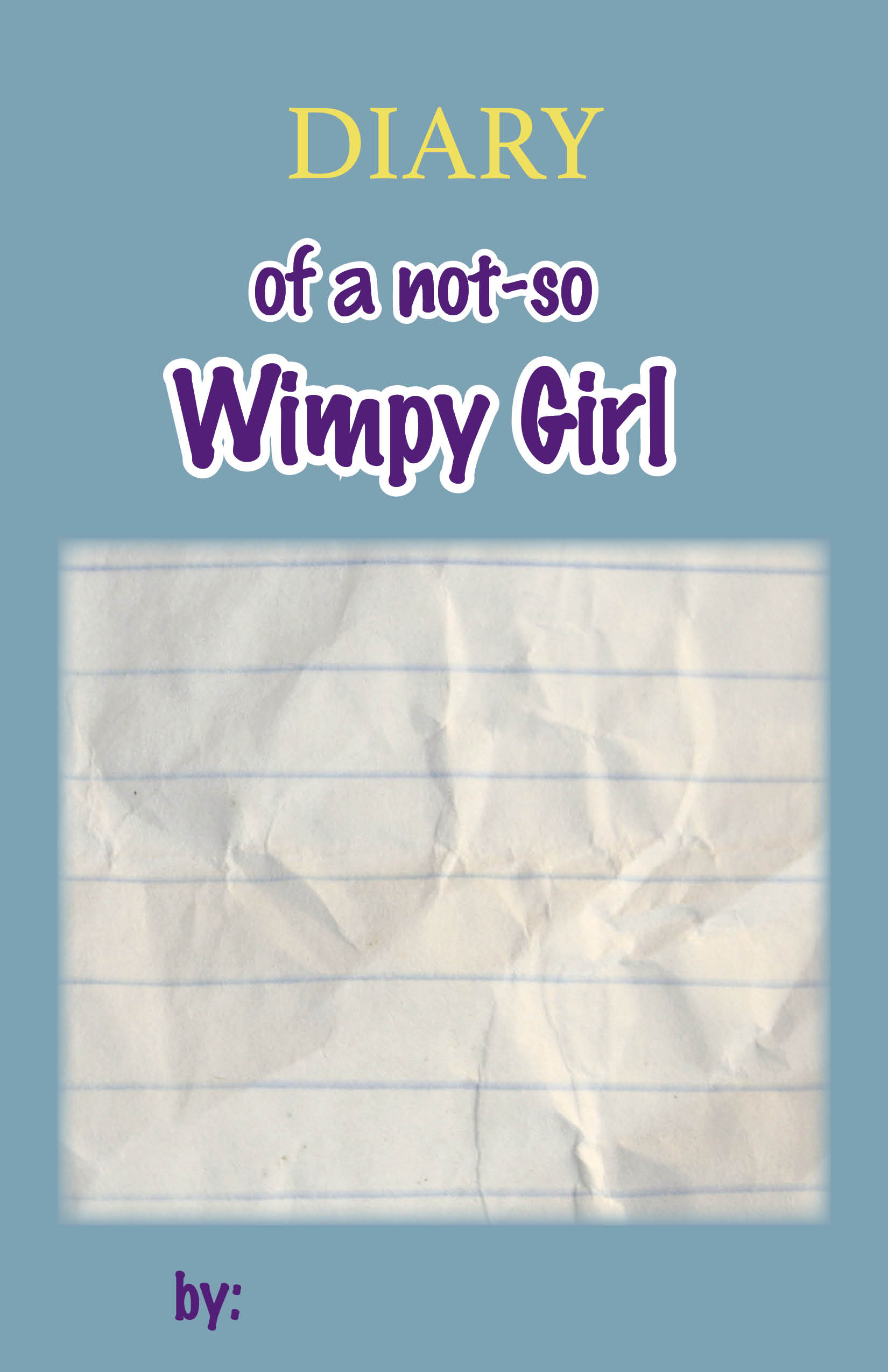
You Should Tour a Mine at Least Once
Everyone should tour a mine at least once in their lifetime. It is a tangible and interesting way to understand the effort, danger and environmental impact that goes into extracting natural resources from the ground that are used in everyday items we find indispensable.
Your cell phone alone contains many natural resources that come out of the ground such as copper, gold, silver, palladium, crude oil, and lithium.
Now, I’m not encouraging you to tour an active mine or to get lost in an abandoned mine. No, no, no. There are plenty of tourism opportunities all around the country and world to take a guided tour of an inactive mine. It’s not only an educational experience, but it’s fun too.
I’ve toured a coal mine in England, a gold mine in Georgia and a zinc mine in New Jersey.
Today I want to tell you about the zinc mine in New Jersey called The Sterling Hill Mining Museum because in addition to being interesting it was also beautiful.
Can a mine be beautiful? I thought parts of this one were, but I’ll let you be the judge.
HISTORY OF THE MINE
Sterling Hill was an active, operating underground zinc mine for 138 years from 1848 to 1986. In that time, more than 11 million tons of zinc ore was extracted from the mine. The zinc ore was found in thick seams up to 2,550 feet below the ground.
The original owner of the mine property was William Alexander who also went by the name of Lord Stirling. In addition to owning several mines, he also served as a general under George Washington during the American Revolutionary War. He is not as well known as many of Washington’s generals, but Washington held him in high esteem. He even tasked Lord Stirling with being in charge of the entire Continental Army for two months while Washington left to meet with Congress over the winter of 1778/79.
Now that the mine has been converted to a museum, The Sterling Hill Mining Museum is a non-profit that aims to tell the story of this particular mine and to “inspire life long learning about earth sciences, engineering, and the responsible use of earth’s nonrenewable resources.” The museum is neither pro-mining or anti-mining and I found that stance to be refreshing from an educational perspective. For more information about this museum’s history or mission, click here.
USES OF ZINC
Zinc is quite the versatile material. U.S. pennies are 98% zinc. Zinc is used in personal care products such as acne medication, anti-itch creams, and in vitamin pills. Zinc is also used to prevent rust. When a metal is galvanized, that means it has been coated with zinc. Zinc oxide is also used in paint and sunblock. And the list goes on for uses of zinc, but you get the idea that it is quite important to our everyday lives.
TOURING THE STERLING HILL MINE
The guided tour of The Sterling Hill Mining Museum takes about 2 hours and is broken into 3 parts: Zobel Hall Museum, the mine tour, and Warren Museum of Fluorescence.
The Zobel Hall Museum is actually the old Change House for the miners. It is where they changed into and out of their mine clothes. Their mining clothes would be wet and dirty at the end of their shift, so they would put their boots in a basket and hang their shirts and pants from the bottom of the basket. They’d then hoist their basket up into the air to dry overnight.
The Zobel Hall Museum also holds millions of dollars worth of rocks and minerals, old mining equipment, fossils, and inventions by Thomas Edison.
I was worried this portion of the tour would be boring for my children. I was wrong. The guide gave us a scavenger hunt to do inside the museum (it’s one big room). This actually kept my kids engaged and we learned so much more about the displays in the building this way.
The bulk of the two hour tour is spent underground in the mine and you will walk through about 1,300 ft. of tunnels. This is not a strenuous walk and most all of the paths are level.
Your guide will take you through the process of how the zinc ore was extracted from the mine. They even covered things related to mine safety and what the miners would do if there was a medical emergency.
At one special point in the tour you will reach the Rainbow Tunnel. The guide is going to turn off the lights and then you will see the rainbow of colors glowing from the tunnel.
It made me think “TREASURE!”
This is why I think this particular mine was beautiful. The minerals in the Sterling Hill Mine fluoresce when exposed to ultraviolet light. It was the epitome of an “ooh and aah” moment. Every single person on the tour was surprised and delighted by this natural light show from deep inside the earth.
It was magical and something I have not seen in the other mines we’ve toured.
If you’re wearing a diamond ring, this is the part of the tour when you will discover if your ring is real or fake! No joke.
More than 700 fluorescent minerals are on display in the Warren Museum of Fluorescence. When the lights are turned out you’ll be able to see your diamond ring as well as the other minerals on display glow. We had a lot of fun picking our favorite minerals.
And, thankfully, my wedding ring did glow! PHEW!
OTHER ACTIVITIES AT THE MUSEUM
Rock Discovery Center – The Rock Discovery Center is a great way to learn about the different types of rocks from a guide. You’ll then be able to search and collect the rocks. This activity is only open to the public during limited times, so click here for more information.
Mineral Collecting in the Mine Run Dump – If you’ve always wanted to dig through a giant rock pile looking for treasure, this is the activity for you! They have a pile for local minerals and one for international minerals. There are a bunch of rules for this activity, so click here for more information.
Sluice Mining – Sluicing is how prospectors panned for gold. You can purchase a bag of sand and then run it under water to see what pre-loaded gems and minerals are hiding inside! For hours and pricing click here.
VISITING TIPS
Here are some helpful tips we gleaned from our visit that you might help you when planning your trip.
Accessibility – The mine tour is wheelchair and stroller accessible, but I think that should be asterisked. There was a family with a stroller on our tour and it wasn’t the easiest maneuvering. The mine tunnels are hard-packed, but aren’t necessarily smooth and there were puddles in places. You’re also in tight quarters with a lot of people.
Sorry for the bad photo, but you get the point… If you’re unsure about conditions, I’d recommend calling the mine and asking your specific questions.
Remember This is a Non-Profit Organization – For some odd reason we happened to visit on a day and time when every other tourist in New Jersey also decided to tour the mine. It was record turnout. Instead of turning people away, the museum folks somehow wrangled more guides (I think they were museum volunteers) and managed to give every visitor a great experience. Was it a bit chaotic until everyone was organized? Yes. But did the staff/volunteers handle the experience well? Yes. So, remember to be kind and patient because they do want you to have a great experience.
Young Children – Just a note of caution on taking the mine tour with young children. First, the tour is long at 2 hours. Make sure everyone uses the restroom! Second, there are moments of darkness on this tour. There was a toddler on our tour who was very unhappy (and understandably so) every time the lights were turned off. He started screaming and when we were in the mine that meant those screams echoed. I felt bad for the parents because it wasn’t like you could easily step out of the mine to calm a terrified child. Third, the parents of young children had to do a lot of wrangling to keep their kids by their side and quiet the entire time. I think it goes without saying that it is ill-advised to let kids run free in a mine. My point is that these parents did it and everyone survived, but I don’t know how enjoyable it was for them.
Mineral Dump and Sluicing – If you want to collect rocks and do the sluicing, keep in mind that these attractions close at 3:30. If you arrive for a 1 p.m. tour that lasts 2 hours, you’ll only have 30 minutes for these other attractions. If you are taking the 1 p.m. tour, consider arriving early in order to do these activities first.
Dress Appropriately – We visited in the summer when the temperature in New Jersey can rival that of Hades. Do yourself a favor and bring a sweatshirt. It’s around 56° F in the mine, so if you’re used to 90° F, this is going to feel COLD. Also, wear closed toe shoes. It is just safer.
On Site Amenities – There is food available on site and a gift shop. I can’t vouch for the food, but we did buy a lot of rocks in the gift shop!
OTHER RESOURCES
If you want to learn more about fluorescence and phosphorescence, this site is helpful.
If you want to see if there is a mine in your state open for tours, you can check out the list the National Mining Association keeps on their website. It’s not a comprehensive list, but it is a start.
FINAL THOUGHTS
A great deal of what I know about mining has come from hearing news reports of unsafe mining conditions, miners trapped in a mine, lost mining jobs, or the negative health effects of mining.
Does visiting one mine as a tourist suddenly make me an expert on this topic? Heck no.
That’s the point.
Everyone should tour a mine at least once because it is an eye-opening experience. You realize how much there is to learn about this topic. You’re digging into the dark recesses of your mind to try and remember what you learned in geology class. You’re suddenly thankful that you have a nice, boring office job where the most danger you might encounter on any given day is a paper cut. You’re also confronted by the harsh environmental realities that have to be reconciled with the fact that our world as we know it does not function without mining.
Our family travels to learn because it is fun and engaging. It also makes us think about the world we are living in and that is invaluable.
Did my kids ponder this issue as deeply as I did? Of course not. They both decided mining wasn’t the career for them, but they were super happy about all the rocks they selected as souvenirs. I call that a win.
Go visit a mine. You’ll be happy you did.
Here are some other travel posts you might enjoy!
Travel: Franklin D. Roosevelt Presidential Library – Should you take kids?
Visiting Ireland: Talking Statues
10 Must See Places in Ireland if you Like Castles and Nature











